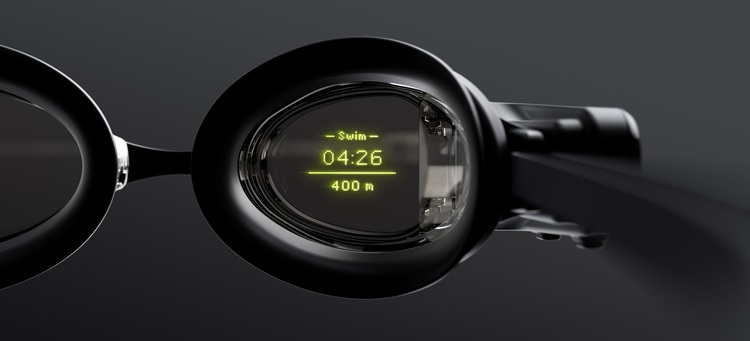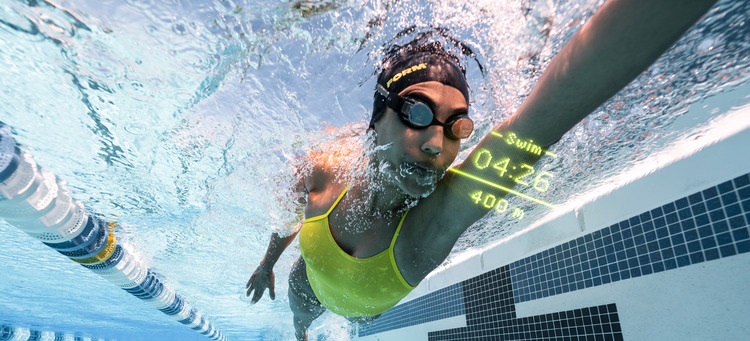Although the field of data science is relatively diverse, it remains, as with most tech industries, a relatively male-dominated field. According to UK data from 2020, only 15 percent of the world’s data scientists are women.
On International Women’s Day (IWD), when social and economic realities of gender disparity are being addressed under the theme – #EmbraceEquity, I thought it timely to celebrate the successes of two STEM women who are driving sport performance through tech.

Erica Buckeridge and Neha Chhatre are data scientists at FORM, the Canadian company behind the world’s first AR-powered swim goggles. They work on the machine learning team, using data analysis and machine learning models to analyze customer data, optimize FORM’s performance metrics and improve the swimming experience.
I asked Buckeridge and Chhatre about their STEM journey and how they harness data science within their work to help drive sport performance for swimmers around the world.
For the love of STEM
“I always knew I wanted to be an engineer,” began Chhatre. “I loved taking apart the VCR and the toaster as a kid. I still have a graveyard of appliances I promised I would put back together.”

Neha Chhatre
“While in university, I tried a variety of disciplines, but always enjoyed working in research and development. In graduate school, I was working with a team of engineers that were developing wearable devices for rehabilitation and physical therapy. I was able to experience the impact technology can have and the need for innovating human movement solutions,” shared Chhatre.
“Wearable devices can provide continuous feedback or interventions that can be easily incorporated into a user’s daily activity,” explained Chhatre. “I wanted to be able to create devices that continue to improve an aspect of health or fitness.”
Buckeridge knew her path early on, too. “For as long as I can remember, I’ve wanted to combine my abilities in math and science with the massive interest I had in sports – if you’d told my teenage self that I’d be working in the sports technology field now, I’d have been pretty pleased with myself!

Erica Buckeridge
“I was fortunate enough to discover the field of “biomechanics” for my undergraduate degree; the study of human movement, and continued my further education in bioengineering, where I developed a huge interest in wearable devices for the purpose of both clinical and sports applications. It was around this time that Fitbit and Apple Watches were becoming ubiquitous, so I wanted to develop the relevant machine learning skills that would enable me to work with these big biometric data sets and tell compelling stories about health and movement through them,” stated Buckeridge
“I feel really fortunate to have now found a career in data science, working daily with data and technology that is reinventing the sport of swimming,” reflected Buckeridge.
Data Science for Women: What does it take?
“Data science is a relatively new field, and there is no set career path. However, it is important to be curious and creative,” commented Chhatre.
“Being able to find patterns in data requires investigating the problem from many different angles,” added Chhatre. “Ultimately, we are telling a story by visualizing the data and communicating the results.”
“I’ve been really fortunate to have had fantastic female role models to look up to, both during my time in academia and in industry,” remarked Buckeridge .
“I don’t think I thought about it or appreciated it at the time, but I had a wonderful PhD supervisor, Professor Alison McGregor, who always made me feel comfortable, supported, and motivated as her student. She was always at the top of her field and so highly regarded by her many male peers that it never seemed like such a barrier for someone like me to succeed in STEM or pursue a career in a male-dominated field.”
“I look back with such appreciation towards Alison because it really reinforces the notion of diversity and representation being paramount to inspiring self-confidence and overcoming barriers,” added Buckeridge .
Data Science and Swim Performance
I asked Chhatre and Buckeridge about how they use data science at FORM to disrupt swim performance. Buckeridge responded, “Performance in sport and technology go hand in hand, and it’s exciting to see such rapid advances in this field.”
“Every step, breath and even heartbeat can be tracked by our accessories, and there is so much we can learn about ourselves, from how we run, all the way to how we sleep,” said Buckeridge . “But for too long, we didn’t have this technology available to us in swimming, and it was always such an analog sport compared to running and cycling, where real-time biofeedback and digital fitness communities are considered table stakes.”
Chhatre replied, “Now with the development of FORM goggles, we can provide swimmers with meaningful swim metrics on demand. For example, FORM goggles can give real-time stroke rate information during the length, so athletes can stay on pace and notice signs of fatigue before they even reach the wall. This is crucial for long intervals or self-guided workouts. At FORM, we are continuously trying to find key metrics that will help swimmers achieve their goals, whether it is improving their endurance, speed or technique.”
“I am an avid swimmer, so the opportunity to work at FORM has been really rewarding,” commented Chhatre. “I am excited to work on finding new ways to provide meaningful insights to swimmer.”

-30-
More about International Womens Day and Stem



